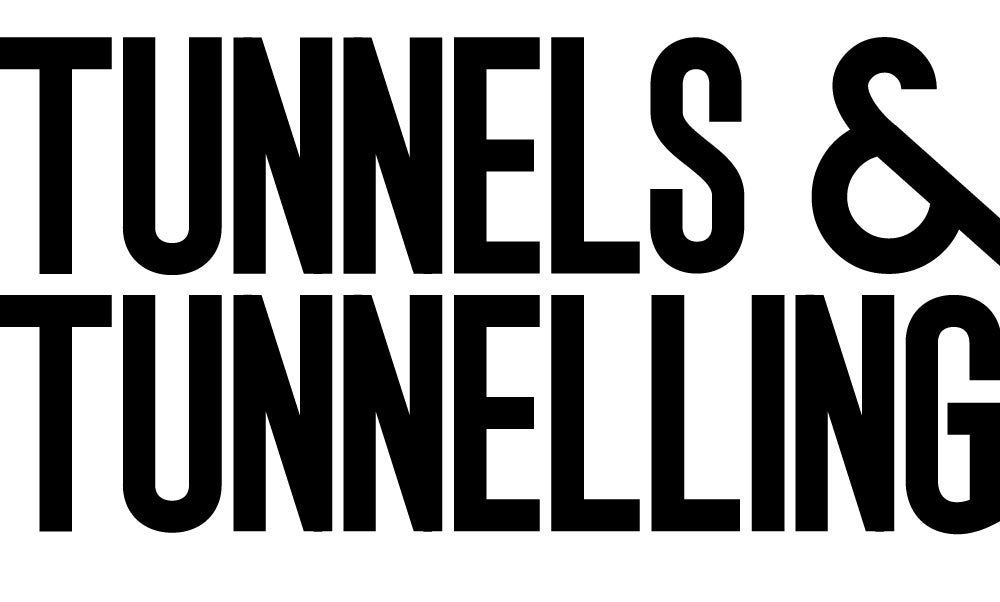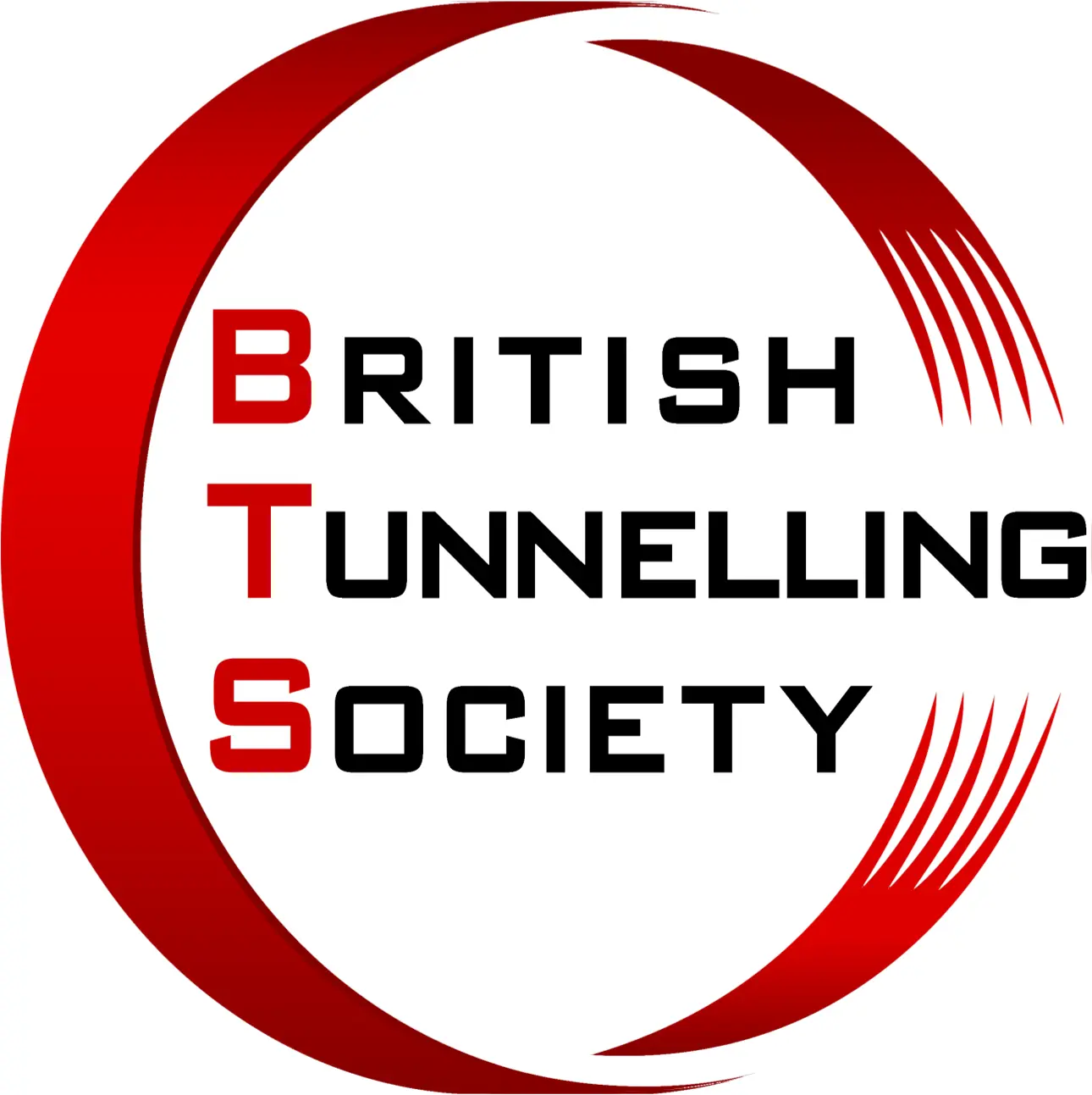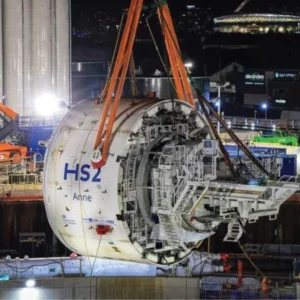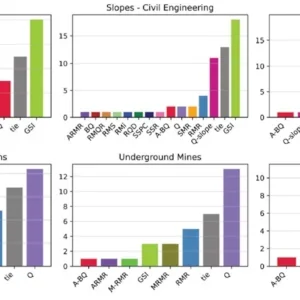Over the past eighteen months or so trenchless technology has shown something of an upturn across various parts of the world. The HDD sector appears to be making a significant recovery after its downturn due to the vagaries of the fibre networks markets in the early years of the new century. Microtunnelling still seems to have a significant market share in the new installation sector and more specifically a modified microtunnelling/HDD combination technique has been developed for long distance, larger diameter pipe installations in difficult ground.
Microtunnelling, pipe jacking and auger boring
The advantages and effectiveness of microtunnelling and horizontal directional drilling (HDD) in suitable ground conditions have been widely used for over 30 years, but both systems have their limitations in some ground conditions and in relative cost terms. Herrenknecht AG has combined elements of both the microtunnelling and HDD processes to overcome these limitations on longer distance, larger diameter bores in some of the more arduous ground types, particularly in more environmentally sensitive areas. The new process is known as Easy Pipe (figure 1).
Easy Pipe method has been developed to create a technology that will provide an economic No-Dig solution for the installation of a pre-prepared and tested non-tensile pipeline with relatively large diameters of between 800 and 1400mm over comparably long installation lengths of between 500 and 1000m in difficult soil types such as gravel, rubble, rock, etc.
Step 1 of an Easy Pipe installation is akin to microtunnelling and gives the same degree of accuracy and control of both line and grade. The difference is that specially designed jacking pipes are used, which can be retracted from the completed bore and at the same time be used to pull in the product pipe. The joints of the jacking pipe sections bolt together with a design that will withstand thrust and pullback forces of up to 6300kN (630t). The close proximity of the jacking pipes pipe’s outer wall to the bore wall also avoid the potential for collapse of the bore in unstable ground formations.
After the microtunneller cutter head has reached the target pit, a specially designed connection pipe is used to link the retractable jacking pipes to the waiting product pipe. The jacking pipes are then pulled back through the bore using the bi-directional jacking frame, simultaneously pulling the product pipe into position. In the launch pit the individual jacking pipes are successively removed along with all other equipment until the product pipe arrives at the microtunnel launch shaft.
Looking at both the microtunnelling and auger boring markets, The Robbins Company has launched a Motorised Small Boring Unit (MSBU). The MSBU is an advanced type of the Robbins’ Small Boring Unit (SBU). Both MSBUs and SBUs are used in conjunction with Auger Boring Machines and/or microtunnellers. The MSBU is a rock boring attachment that can be steered continually throughout a drive. The MSBU can also bore longer drives and through harder rock than the normal SBU.
Robbins’ Motorised Small Boring Unit is available in a range of diameters from 1200mm to 1800mm and is designed to excavate medium to hard rock. However, both machines can be fitted with cutterheads that can bore through mixed ground conditions.
Both the MSBU and SBU units can bore rock strengths and types with an Unconfined Compressive Strength (UCS) from 25 to over 175MPa. The MSBU, however, can bore through hard, abrasive rock more effectively since the cutters can be changed at any point during the drive.
Perforator, a subsidiary of Schmidt, Kranz Group Company, has long been associated with the pilot auger and microtunnelling sector. During 2006, the company launched a new range of equipment designed specifically for the new installation market.
The range includes the new Controlled Blind Hole Drilling system; a new self-grouting thrust boring/pipe bursting technique; a steered, rock auger boring system; the new TAIFUN rig for HDD work, thrust boring and core drilling operations and the new percussive ‘guided’ piloting system.
The Controlled Blind Hole Drilling system is designed to install pipeline to an end target that is inaccessible, such as an existing sewer. Once the pilot bore has been achieved and reamed and cased to the required diameter, the pilot rods are then reinserted into the cased hole with a coring head at the head. A core is cut out of the target (sewer pipe wall) and the required product pipe is jacked through the casing pipe until it reaches the cored hole in the sewer wall. Once the product pipe is in place the casing pipes are removed for future use.
Perforator also introduced a new Steered Auger Boring head arrangement for rock that uses a pilot rod with an angled head, to provide the steering bias, which is connected to a series of pilot rods. To the rear of the pilot string an impact hammer bit is fitted to the end of a pneumatic hammer that sits inside the lead end of an auger casing. This lead section is in turn connected to a rotating auger string fitted inside a casing string. As the pilot rod advances along the required course the following hammer arrangement is used to expand the bore diameter to that required using the impact hammer and bit. The required pipeline is therefore completed to size in one operation.
The TAIFUN system is based on a single basic drilling and jacking rig. The chuck and drill rods however can be interchanged to enable the one rig to achieve a variety of installations. It can be a pit launched HDD rig or a core drilling rig. It can also be used as a thrust bore rig to install jacked pipes using pilot auger microtunnelling.
HDD
Staying in the HDD sector, the improving market for HDD equipment has been supported by a number of new drilling rig and support equipment launches over the past 18 months.
Amongst the latest product releases has been a new 150t pullback capacity drilling rig from rig US-based Vermeer Manufacturing. The all-new D330x500 NAVIGATOR horizontal directional drill is designed to combine a powerful large rig with efficiency, mobility, and ease of transport to serve a growing large-diameter drilling market.
A Tier 3 Caterpillar 403kW diesel engine powers the D330x500, an increase of some 11kW over the unit’s predecessor, the D300x500. Combined with a hydrostatic hydraulic system which produces 67,790Nm of rotational torque, the D330x500 is ideal for drilling in difficult ground formations and operation with large diameter backreamers. The unit also delivers some 149,700kg of thrust/pullback force for long-distance drilling projects, an increase of 13,610kg over its predecessor. The operator’s station has also been redesigned and reconfigured so that all functions, including transport, drilling controls, crane, and drilling fluid controls, are operated from the cab. A 360° view helps improve operator efficiency and maximises comfort, while providing room for a second crew member to consult in the drilling operation.
A new DP 600 LCD drill monitoring system also helps the operator check all drill functions and serves as a diagnostic service tool to help with troubleshooting. In the event of a drill malfunction, the display automatically informs the operator with a warning fault light and helps speed service diagnostics in the field.
The D330x500 rack will accept a standard oil field drill stem up to 9.7m in length and 114 to 152mm diameter.
Vermeer has also introduced a cab option for its D24x40 Series II and D36x50 Series II NAVIGATOR HDD rigs. The cab is designed to enhance operator efficiency and comfort on the job site. The insulated and climate-controlled cab provides 360° visibility, allowing the operator to easily monitor all machine operations. Independent heating and air-conditioning controls allow the operator to control the cab climate and enhance comfort in all weather conditions, including snow, rain and summer heat.
Turning to another renowned HDD manufacturer, the DD 210 is the latest track mounted, surface launched, fluid assisted, mechanical directional drilling system from American Augers, part of the Astec Underground Group. The new unit is designed to be utilised for utility construction and smaller pipeline installation projects because it provides excellent site mobility due to a self-propelled travel system that is based on excavator tracks. It generates up to 94t thrust and pullback power and a maximum 33,750Nm of rotary torque.
In terms of HDD support equipment, American Augers has also launched the MPR 6000, the latest innovation in its Mud Pumping and Cleaning System range for drilling fluid pumping, cleaning, and mixing.
The MPR 6000 has the ability to mix, pump, and provide large volumes of mud ‘down hole’ for use with mud motors or large reamers. Overall, the fluid production capacity is between 1,135 and 1,890l/min, so the MPR 6000 is a compliment to any site utilising a large directional drill or auger boring equipment, regardless of soil type or condition.
Another of the well-known HDD manufacturers, Ditch Witch, has introduced a powerful new horizontal directional drill that is claimed to be more manoeuvrable, easier to operate and maintain than any other machine in its class. The Ditch Witch JT922 offers the highest power-to-size ratio in the 40kN pullback category. At a full 300mm shorter than its nearest competitor the rig boasts a higher carriage speed and greater pipe capacity. The new JT922 is easy to set up and operate in tight spaces such as backyards and alleyways, and its size also makes it easy to transport, and with up to 90m of pipe, the carriage travels at 57m/min, or about 24m/min faster than competitive models.
The JT922 is part of the Ditch Witch organisation’s complete HDD system, which also includes tracking electronics to monitor and guide the progress of the bore. These are often sold separately, but the JT922 comes complete with a Ditch Witch 752 Display unit that receives and records the data sent by its companion 752 Tracker.
Switzerland-based Terra AG has developed the TERRA-JET 2608 E HDD machine which can be pit launched or surface launched. Using the modular design unit, pilot bores can be reamed up to 420mm diameter (depending on ground conditions). With its main components comprising the pit frame, the hydraulic power pack and the mixing and pumping station, it can install HDD bores of up to 150m long. With its sophisticated 1.5m long, 55mm diameter drill rods bores may include curves with a minimum bending radius of 35m.
The rig offers high torque (2600Nm) and thrust and pullback capacity (80kN or 8t), enabling boring in hard ground.
As with all TERRA-JET systems, the TERRA-JET 2608 E is equipped, as standard, with ADBS. This unique drilling and backreaming system adjusts the working speed automatically to the ground conditions. With its two separated hydraulic circuits for thrust and rotation, the TERRA-JET 2608 E can operate simultaneously at maximum torque and maximum thrust or pullback force.
The TERRA-JET 2608 E can be equipped with the TERRA-ROCK Air Percussion Head for pilot bores in hard and rocky ground conditions up to an unconfined compressive strength of 60MPa.
Impact hammers
At what by some is often mistakenly seen as the ‘less sophisticated’ end of the installation equipment market, Ditch Witch has introduced a new range of pneumatic earth piercing, or impact moling tools, to its product portfolio. The Pierce Airrow II range is designed to perform short to medium range compaction boring projects, pipe ramming and pushing, and pipe pulling works.
Strength and simplicity have been designed in as the keys to these tools’ productivity. There are seven models in the range, with outside diameters from 57-108mm, with or without threaded heads. Each model is constructed of single-piece, high-specification aircraft quality steel that contains high amounts of nickel which is heat-treated to be extremely durable. The tools have fewer moving parts than competitive equipment so therefore require less maintenance.
The hammers have what is claimed to be a unique striker design, which enables the tools to flex when they encounter a buried obstacle. The highly machined tool does not need wear rings that would require the tool to be disassembled more often for maintenance. These and other design features are said to help the Pierce Airrow II tools give more blows per minute than competitive models, in some cases as many as 100 blows per minute more, enabling faster work rates.
Other Pierce Airrow II features and benefits include tapered buttress thread joints (like on drill pipe) that ensure positive locking and maximise strength at all threaded connections; a Nord-Lock securing system that reinforces joints that are subject to extreme vibration or dynamic loads; and a 1/4 turn reverse mechanism.
Optional equipment for Pierce Airrow II tools includes nose expanders and replaceable heads that increase the diameter of the borehole, and clamp-on rear expanders and tail adapters for pulling in PVC pipe or other material behind the tool.
So, despite over 20 years of continual development of new installation equipment for the trenchless industry, it would appear that there continues to be more to come from this innovative and environmentally aware technology sector.
Stage 1 – The microtunnelled bore is installed between the launch shaft/pit and the target shaft/pit; Stage 2 – The microtunnel boring head is replaced with a special connection pipe between the jacking pipes and the prepared product pipe; Stage 3 – The jFigure 1 – The main construction stages of the Easy Pipe installation process A Motorised Small Boring Unit or MSBU from The Robbins Company Motorised Small Boring Unit The Perforator stand at No-Dig Live 2006 with its variety of new pipe jacking and augering equipment The Perforator stand at No-Dig Live 2006 The Vermeer Navigator D330 x 500 HDD rig The Vermeer Navigator Cab options are now available on variuos Vermeer HDD rigs Vermeer HDD rigs The new Pierce Airrow II Series pneumatic earth piercing (impact moling) tools from Ditch Witch The new Pierce Airrow II The Ditch Witch JT922 HDD rig The Ditch Witch JT922 HDD rig






